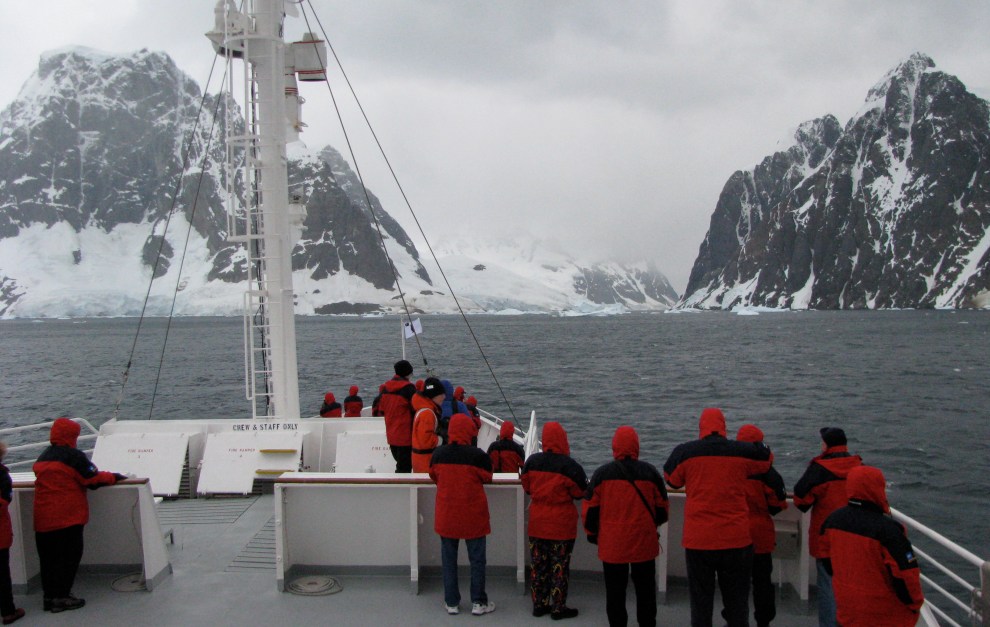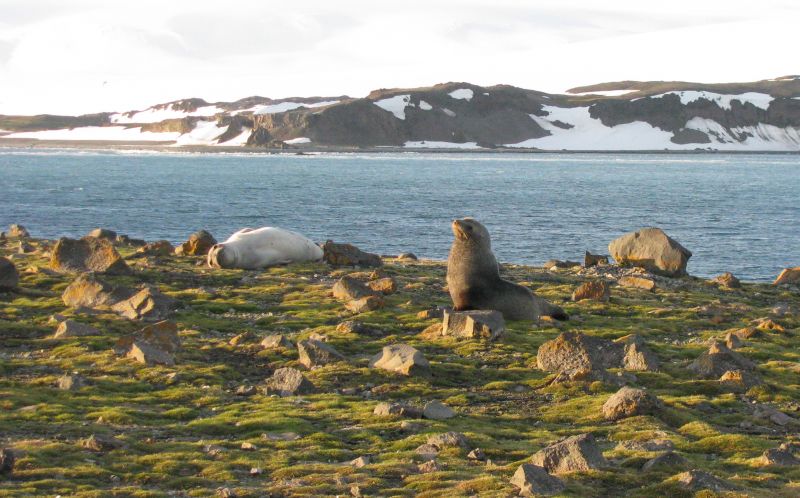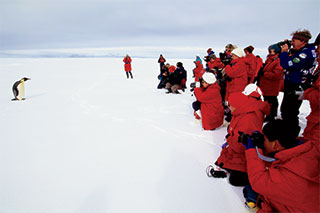
Tourists in Antarctica.Credit: © Julia Whitty.
Invasive species are considered one of the biggest threats to Antarctica—especially as the frozen continent melts and becomes fertile ground for species moving down from the north.
Now a new paper in PNAS quantifies for the first time just how many plant seeds came into Antarctica in 2007-2008 from tourists, scientists, and research-station crews.
The researchers arrived at these finding by vacuuming the clothes, boots, packs, and camera bags of more than 850 scientists, tourists, support personnel, and ships’ crew. Here’s what they found:
- Each visitor carried an average of 9.5 seeds.
- A total of 71,000 seeds were imported into Antarctica that year (calculated).
They also found that while many more tourists than scientists visit Antarctica annually (tourists: ∼33,054; science and crew: ∼7,085), yet more scientists and crews carried seeds:
- 20% of tourists carried seeds
- 40% of science crews carried seeds
What can be done about it? Syd Perkins at Science Now writes of a few simple fixes:
Tourists can clean their equipment thoroughly, including vacuuming their gear bags and emptying the pockets of their outerwear, especially if they’ve recently visited arctic or alpine environments where they could have inadvertently picked up seeds of cold-adapted plants. Also, scientists can pay attention to where cargo destined for Antarctica is stored, especially if it’s been stored outdoors. [Much equipment spends half the year in the Antarctic and the other half in the Arctic.]
Maybe a clean-room shakedown at Antarctic launching ports to apprehend alien stowaways?











